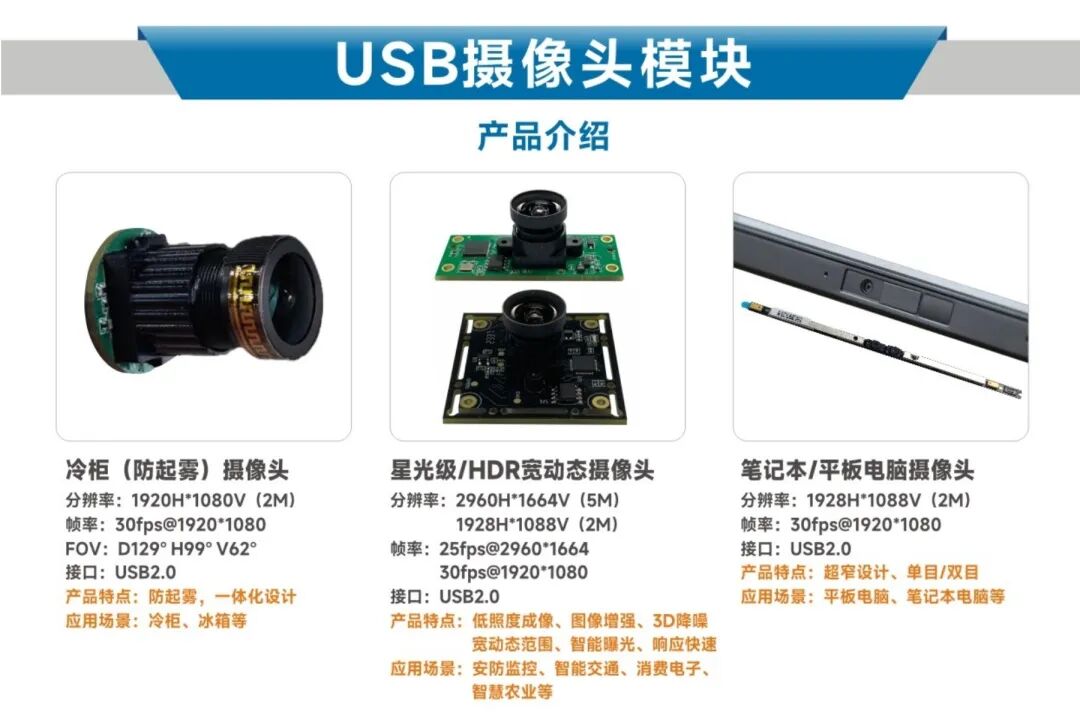A camera module is a functional module that integrates components such as an image sensor, lens, and signal processing circuits, used to capture and process image or video information. It is widely used in various fields such as smart homes, intelligent transportation, smart agriculture, and security monitoring. Below is a detailed introduction to its working principle:
01
Light Focusing
The lens in the camera module is analogous to the lens of the human eye, serving to collect and focus the light reflected or emitted by external objects onto the image sensor. The lens typically consists of multiple elements, which refract the light to propagate along a specific path, ensuring that the image of the object is clearly and accurately projected onto the photosensitive surface of the image sensor.
02
Photoelectric Conversion
The image sensor is the core component of the camera module, primarily available in two types: CCD (Charge-Coupled Device) and CMOS (Complementary Metal-Oxide-Semiconductor). When light strikes the photosensitive elements of the image sensor, it excites electrons, converting the light signal into an electrical signal.
For CCD sensors, the charge generated by each photosensitive element is sequentially transferred and read out, processed through amplification and analog-to-digital conversion, ultimately forming a digital image signal.
CMOS sensors integrate amplification circuits and analog-to-digital conversion circuits on each photosensitive element, allowing direct conversion of light signals into digital signals, with advantages such as low power consumption, low cost, and high integration.
03
Signal Processing
The electrical or digital signals output from the image sensor typically require further processing through signal processing circuits. These circuits perform a series of operations on the image signals, such as noise reduction, white balance adjustment, color correction, contrast enhancement, and sharpening, to improve image quality, making it closer to the real scene perceived by the human eye.
Additionally, the signal processing circuits may compress and encode the image, formatting and compressing the image data according to specific algorithms for easier storage and transmission. Common compression formats include JPEG, H.264, and H.265.
04
Data Output
The processed image data is ultimately output in a specific interface format, with common output interfaces including USB, HDMI, and MIPI. These interfaces connect the camera module to other devices, such as computers, displays, and mobile processors, allowing the transmission of image data to the respective devices for display, storage, or further processing.
Huineng Perception Camera Module

Scan to Follow Us
1

Mr. Huang
130 7782 2537
2

Mr. Huang
134 2897 6107
Follow Us

Search “Huineng Perception” on Douyin
You can also follow us on Douyin